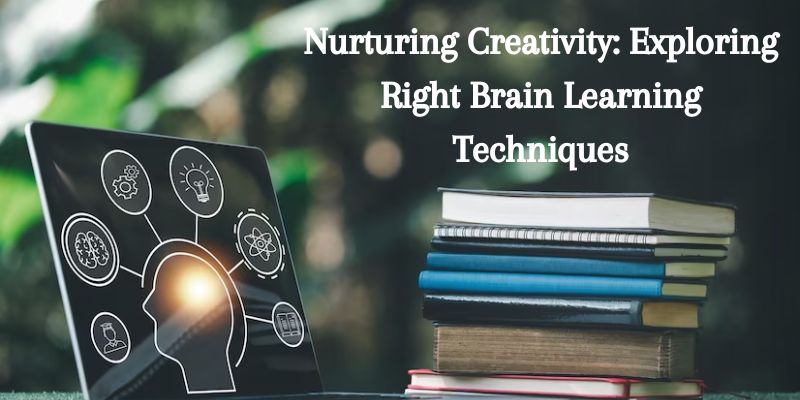In today’s rapidly evolving world, creativity is increasingly recognized as a vital skill for success across various domains. However, traditional education systems often prioritize left brain functions such as logic and analysis, neglecting the importance of nurturing creativity and imagination. This is where Right Brain Education comes into play, offering innovative approaches to education that tap into the creative potential of individuals.
Understanding the Right Brain
The brain is divided into two hemispheres, each with distinct functions. While the left hemisphere is associated with logical thinking and analytical reasoning, the right hemisphere is responsible for creativity, intuition, and holistic perception. Right Brain Learning Techniques focus on stimulating the creative faculties of the right hemisphere, fostering a more balanced and comprehensive approach to learning.
Embracing Multisensory Experiences
One hallmark of Right Brain Learning Techniques is the incorporation of multisensory experiences into the learning process. Unlike traditional educational methods that primarily rely on auditory and visual stimuli, Right Brain Learning encourages the use of all senses—sight, hearing, touch, taste, and smell—to enhance learning outcomes. By engaging multiple sensory modalities, individuals can deepen their understanding and retention of information while promoting creativity and imagination.
Cultivating Artistic Expression
Artistic expression lies at the heart of Right Brain Learning Techniques. Activities such as drawing, painting, sculpting, and music not only stimulate the creative faculties of the right brain but also offer a means of self-expression and emotional exploration. Additionally, concentration activities for students like mindfulness exercises or puzzle-solving can enhance focus and cognitive abilities. By engaging in artistic endeavors and concentration activities, individuals can develop their imagination, problem-solving skills, and aesthetic sensibilities, fostering a more holistic approach to learning.
Encouraging Imagination and Play
Imagination and play are fundamental aspects of childhood development, yet they are often undervalued in traditional educational settings. Right Brain Learning Techniques prioritize imaginative play and storytelling as essential components of the learning process. Through imaginative activities, such as role-playing, creative writing, and fantasy exploration, individuals can expand their cognitive flexibility, empathy, and understanding of the world around them.
Integrating Movement and Kinesthetic Learning
Movement and kinesthetic learning play a crucial role in Right Brain Learning Techniques. Physical activities, such as dance, yoga, and hands-on experimentation, not only promote physical health and well-being but also stimulate brain function and creativity. By incorporating movement into the learning process, individuals can enhance their spatial awareness, motor skills, and sensory integration, leading to more immersive and engaging educational experiences.
Fostering Collaboration and Communication
Collaboration and communication are essential skills in the modern world, yet they are often overlooked in traditional educational models. Right brain exercise emphasize cooperative learning activities, group projects, and peer interactions as valuable opportunities for social and emotional growth. By working together towards common goals, individuals can develop their interpersonal skills, empathy, and ability to communicate effectively with others.
Embracing Failure as a Learning Opportunity
In Right Brain Learning, failure is viewed not as a setback but as a natural part of the learning process. Rather than fearing failure, individuals are encouraged to embrace it as an opportunity for growth, exploration, and innovation. By adopting a growth mindset, learners can develop resilience, adaptability, and a willingness to take risks, ultimately leading to greater creativity and success in their educational pursuits.
Nurturing creativity through Right Brain Learning Techniques is essential for preparing individuals to thrive in the 21st century. By embracing multisensory experiences, artistic expression, imagination, and collaboration, individuals can unlock their full creative potential and develop the skills they need to succeed in an increasingly complex and interconnected world. As educators and learners alike continue to explore new approaches to education, Right Brain Training offers a promising path towards fostering creativity, innovation, and lifelong learning.



